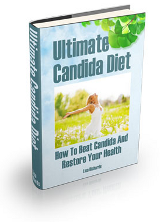This article discusses causes and treatment for yeast infections. Candida Albicans is the name of the particular yeast that causes the problem. Oral thrush is the common designation for an overgrowth of Candida Albicans in the mouth.
Other Candida Albicans overgrowths occur elsewhere in the body for both women and men. For purposes of this article, we will focus on the effect on women. However, oral thrush in men occurs much the same way and may be treated the same.
Early Warning Signs
When a woman suffers from a Candida overgrowth, it begins first in the GI tract. It then may migrate up to the mouth and downward resulting in vaginal infection. Oral thrush is an indication that the entire GI tract has an excessive amount of the Candida bacteria.
Since Candida bacteria thrive in warm, moist environments, the mouth is a prime target. The infection is easy to recognize and diagnose because there are visible white patches on the tongue and inside cheek areas, resembling cottage cheese. Two major age groups are most susceptible to infection — babies and older adults. These two age groups are at opposite ends of immune system development. One group is building immunity while the other group experiences a decline. Nevertheless, it can infect anyone of any age.
The same conditions that cause vaginal infections vaginally are also responsible for mouth thrush, plus a few additional ones: Antibiotic medications taken for some other condition; inhaled corticosteroids; diabetes; HIV or weakened immune systems; menopause, poor dental habits, high blood sugar levels and dry mouth (xerostomia). However, a poor diet is the most common cause.
The infection can cause sore throat, a burning sensation, bad taste in the mouth, bad breath, and difficulty in tasting flavor in food and is like having “cotton in the mouth.”
Do not spread the infection: wash your hands, glasses, cups, dishes and toothbrush and be careful not to kiss anyone while you are contagious.
Common Home Treatments Include:
- Gentian Violet dye
- Mild salt water rinse
- Oral anti-fungal medicines containing Polyenes or Azoles
- Probiotics
- Chlor Hexidine
- Denture cleansers
- Yogurt
- 3% Hydrogen Peroxide rinse
- Apple Cider Vinegar rinse
- Pau d’Arco bark tea (2 Tablespoons to 16 ounces water)
- Tea Tree Oil as mouthwash, but do not swallow
- Pomegranate Gel (like commercially produced miconazole gel)
These remedies do not work for everyone all of the time. In addition, be aware that prevention is much easier and healthier.
Make salt-water rinses with one teaspoon of salt per eight ounces of warm water. Probiotics have been reported by the Mayo Clinic to help all Candida yeast infections by not actually killing off the bacteria responsible, but by rebuilding the bodies own defenses, that will naturally kill off the overgrowth and bring things into the proper balance again.
When your mouth is sore, drinking very cold liquid is soothing and eating soft foods should not cause noticeable irritation. However, watch sugar content closely because it is the perfect medium for yeast growth as any beer maker or distiller will tell you.
These types of treatments may take 14 days or longer if effective.
The Herxheimer Reaction
Any treatment used to fight Candida may cause a “Herxheimer” reaction. This is when the condition becomes worse before beginning to improve. Symptoms may appear or become worse once treatment begins. It is a common occurrence and does not indicate that treatment failed.
However, toxic buildup may develop quickly because of the infection. This is an indication that the body is struggling to eliminate an overgrowth of bacteria. Watch out for these symptoms: sweaty chills, dizziness, headache, depression, fogginess, anxiety, anger, gas, muscle aches, sore throat, fatigue and sleepiness.
CLICK HERE FOR MORE INFORMATION ABOUT HOME TREATMENT OPTIONS
